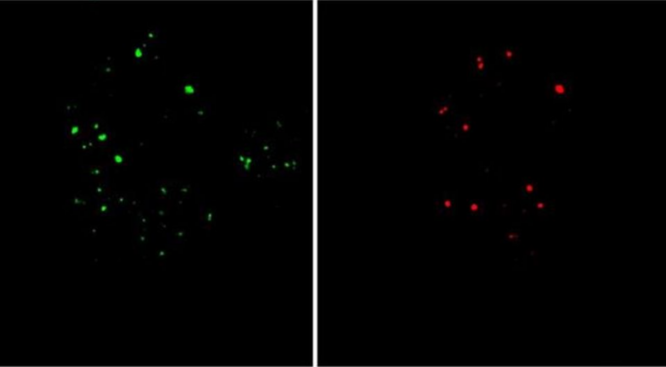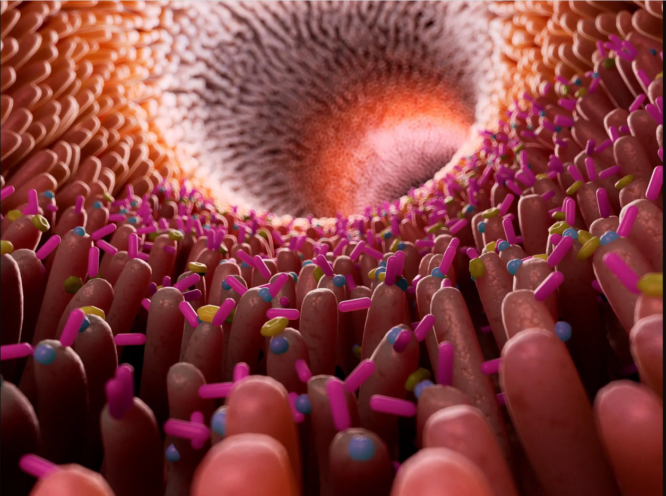
New Cellular Probe 2023
Sanjh
- 0
A novel probe created by University of Cincinnati researchers has improved cell studies and revealed new cellular processes.
Jiajie Diao, PhD, and Yujie Sun, PhD, of UC led ACS Sensors study published May 4.
Target endolysosomes
The researchers studied endolysosomes, cell organelles that conduct numerous functions. Endolysosomes are a subclass of lysosomes that start as endosomes, the cell’s “recycling center” that reuses damaged or defective building pieces.
Lysosomes are crucial to research because abnormalities can produce toxic cell buildups in lysosomal storage disorders. Lysosome dysfunction is linked to neurological disorders and cancer.
“If lysosomes are not functioning normally, the cell will accumulate lots of waste, eventually leading to cell death,” said Diao, University of Cincinnati Cancer Center member and associate professor in the Department of Cancer Biology in UC’s College of Medicine.
These organelles transform from neutral to acidic when they become lysosomes. Lysosomes cannot recycle waste if the environment is not acidic enough.

“We are trying to image this process and track the whole changing process of the endolysosome and trying to figure out in which state and which location these endolysosomes will become abnormal,” Diao added.
New probe
Last year, Diao and Sun reported findings on the ECGreen probe, which turned brighter green in acidic cell environments. Diao claimed ECGreen has limits despite its progress.
“I can only know it’s become lower,” Diao remarked. How high is high? You cannot calibrate this value.”
The team’s latest probe is green in a neutral environment and red in an acidic cell environment.
“We have red and green signaling, and by calculating the ratio, we can calibrate the exact pH value,” Diao explained. This is better for measuring endolysosome pH.
“Our probe exhibits excellent pH-sensitive fluorescence in endolysosomes at different stages of interest,” said Sun, a Cancer Center member, associate professor, and graduate program co-director in UC’s Department of Chemistry.
Applying research
A damaged cell requires more lysosomes to recycle or clean itself. But how cells increase lysosomes was unknown.
The novel test revealed that all cells, whether normal or diseased, maintain a fixed ratio of endosomes to lysosomes.
Sun said the tiny molecular probe showed a steady conversion rate from early endosomes to late endosomes/lysosomes in living cells. “We are pleased to reveal this constant conversion rate.”
Diao remarked that for the first time, the researchers uncovered a sophisticated protein-controlled pathway governing this endosome-to-lysosome transition.
“This process is highly regulated, and you cannot skip any steps, even in an emergency,” Diao added.
Probe uses
Diao said the new probe has several uses beyond those in the research.
“We can know the location, number, pH change, and size of the endolysosome,” he added. “We will have all cell endolysosome parameters.”
With this data, the team is developing machine-learning algorithms to characterize cell irregularities and swiftly pinpoint lysosome disorders that may lead to illnesses. This technology would be faster and cheaper than gene and protein sequencing and simply require a healthy patient to do a blood test to determine lysosomal disease risk.
Diao claimed staining provides all the information in 10 minutes. “We’re trying to develop a system with these probes for fast diagnosis.”
To speed up the difficult endosome-to-lysosome transition, the researchers are also researching light-based therapies.
“Our research results demonstrate that it is an extremely promising direction in designing and developing small fluorescent probes for bioimaging applications, especially when coupled with high-resolution microscopy,” Sun added. “We will keep developing multifunctional fluorescent probes.”
The team is patenting and commercializing the probe, which UC researchers are using.
Diao called it a classic teamwork. “Dr. Sun and our team work together to make the process fast and efficient. Accelerating discovery is our goal.”
“Dr. Diao’s and my groups’ complementary expertise really make it possible to work on these collaborative projects,” Sun said. Success depends on our groups’ synergy.


